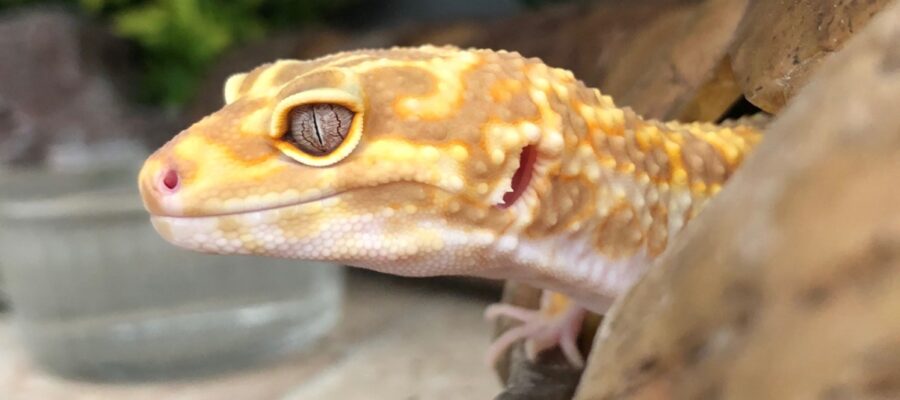Leopard geckos can be prone to a number of illnesses and diseases, and are also frequently rescued from improper conditions or from being abandoned by owners.
If your gecko seems unwell, or if you come across a very poorly gecko which you decide to rescue, then there are some tips which could help the gecko with some minor issues in the short term.
However, it is important that you get any suspected serious health issues assessed by an exotic vet, as trying to treat a gecko by yourself could be harmful for the gecko and may not be sufficient treatment.
To hold your gecko still for a checkup, wrap them in a large piece of fabric, such as a towel
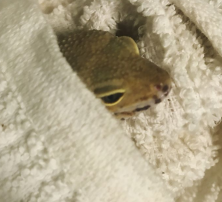
You should only restrain your leopard gecko if necessary as this can be very stressful for them. Situations such as doing a health check, or if they have something stuck to them which needs removing, would be suitable times to do this. I do not advise holding your gecko in one place against its will for any other reason.
It is possible to get a good look at a gecko’s body by simply letting them stand on your hands, however if you do need to restrain them, in order to minimise stress and pressure on your leopard gecko’s body, then holding them in fabric is a good idea.
You can wrap him/ her in a towel or piece of clothing while you examine their body, but pay attention that you’re not putting too much force on them, especially the tail which can be dropped if your gecko feels threatened.
To make them open their mouth, gently and repeatedly rub the area
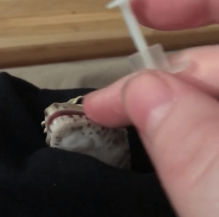
This is a great tip I picked up from Jamie who runs the @AlexanderTheGeck Instagram account, who needed to administer pinworm medication directly into Alexander’s mouth.
Using the above method for restraint, Alexander was gripped between some fabric, and his mouth area was repeatedly rubbed, until he opened it, allowing the medication to be quickly administered.
This tip can also be used for if you want to check your leopard gecko’s oral hygiene and ensure they don’t have any issues with their gums or teeth.
Dab mixture onto their nose to force-feed a gecko
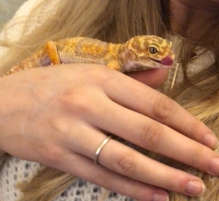
If you have a malnourished and thin leopard gecko who is refusing all food, or is too weak to hunt, then you may need to help them regain some strength by making them eat.
Only do this if you feel your gecko doesn’t have the strength to hunt and eat by itself, and if you’ve tried all other options. See: Why isn’t my leopard gecko eating?
Start by quickly and humanely killing and crushing some insects (waxworms are a good choice for fat and energy) and mixing the guts with calcium and vitamin powder.
Then get a q-tip/ cotton bud, and dab a very small amount onto the end of your gecko’s nose, making sure you avoid their nostrils.
Having something on their nose will make them instinctively lick it off, thus getting some bug and vitamin goodness back into their body. Repeat this a couple of times, then let them relax and try again the next day. It’s important not to overfeed them, just let them have a few icons of the mixture and hopefully they’ll start eating on their own in no time.
Use shedding aid once your gecko turns pale
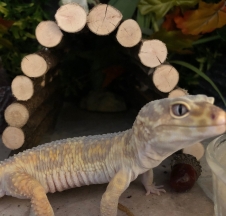
If you have a gecko who is consistently struggling with shedding, then dabbing some shedding aid onto their problem areas just before a shed can be helpful.
This makes the skin more supple and easier for them to pull off, and most importantly it is safe for the gecko.
Look out for them turning paler than usual – this is a sign they are due to shed, and apply the shedding aid to their problem area (e.g. their toes).
I use ZooMed Reptil Shedding Aid.
See my other posts on how to deal with problem sheds where I suggest some other solutions for helping to remove stuck shed.
For minor cuts or abrasions, use Betadine or Neosporin
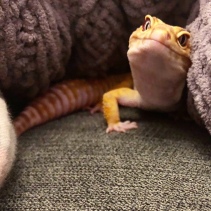 After a day or two, minor cuts or abrasions can heal on their own, however if they don’t seem to make any progress you can sparingly dab some Betadine or Neosporin on the affected area.
After a day or two, minor cuts or abrasions can heal on their own, however if they don’t seem to make any progress you can sparingly dab some Betadine or Neosporin on the affected area.
Be sure the ointment you use does not have any painkillers, as these can can be deadly to reptiles.
If you’re unsure, then it’s always better to consult an exotic vet who can advise you, rather than risking your leopard gecko’s life.
*this post is not intended to replace proper veterinary advice, but may help if you cannot quickly access a vet or if you need an emergency quick fix
Get Your Free Leopard Gecko Care Checklist!
Are you ready to give your leopard gecko the best care possible? Download our FREE PDF e-book featuring a comprehensive care checklist!
This handy guide covers everything from habitat setup to feeding and health tips, ensuring your gecko thrives.
👉 Download your checklist now!


